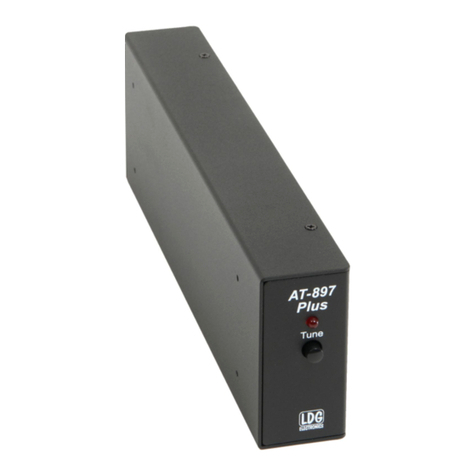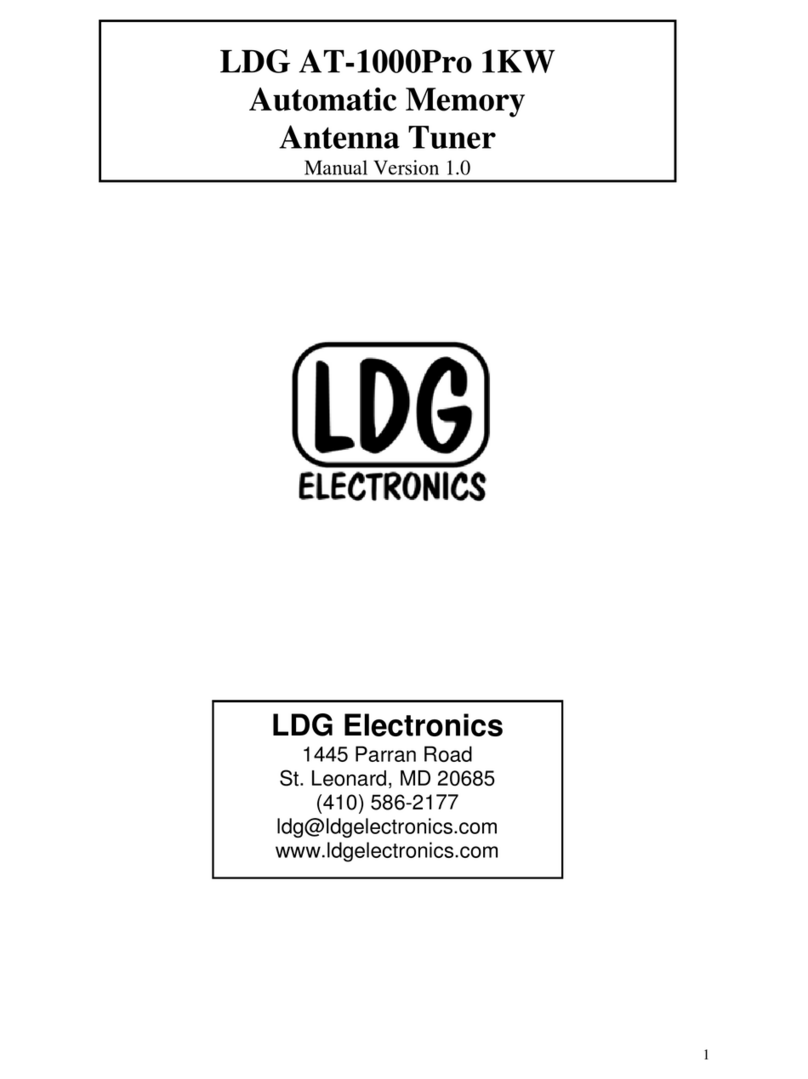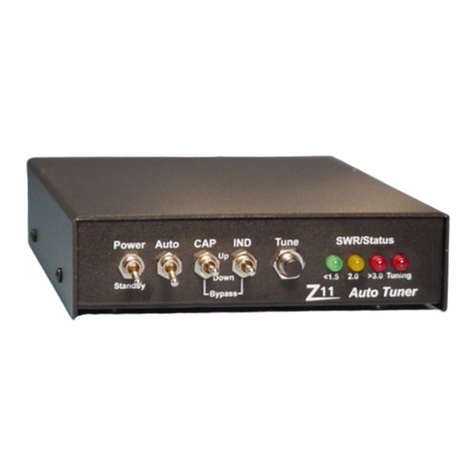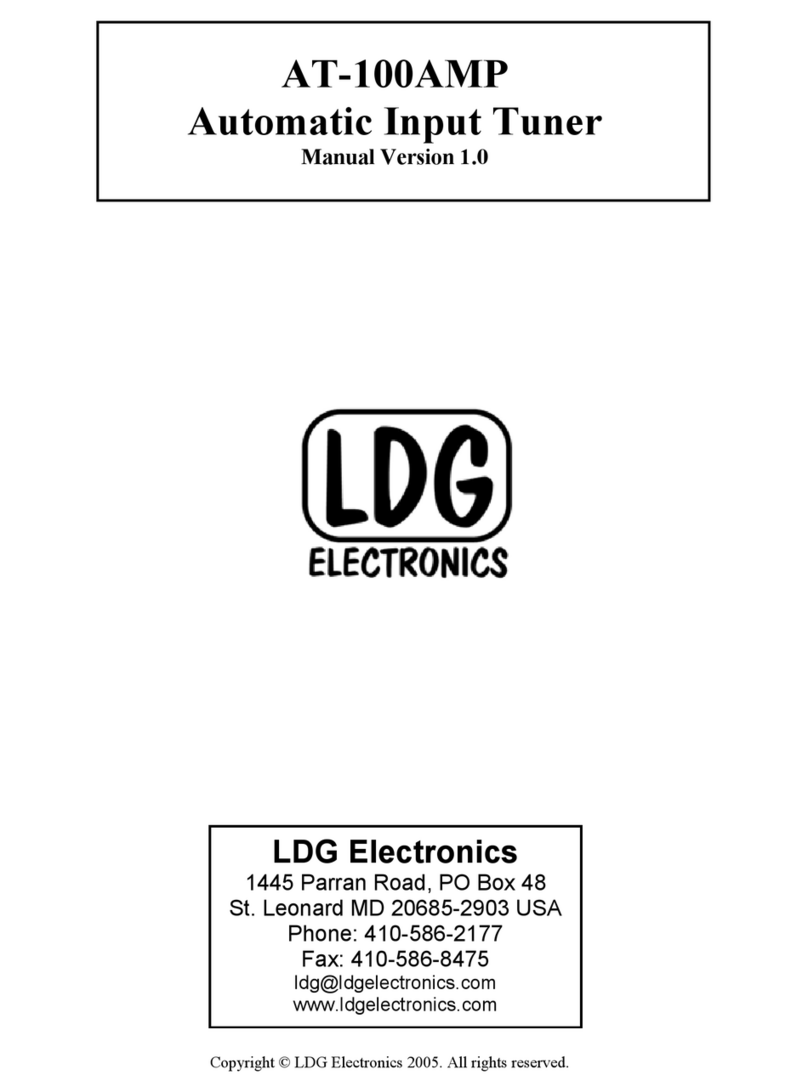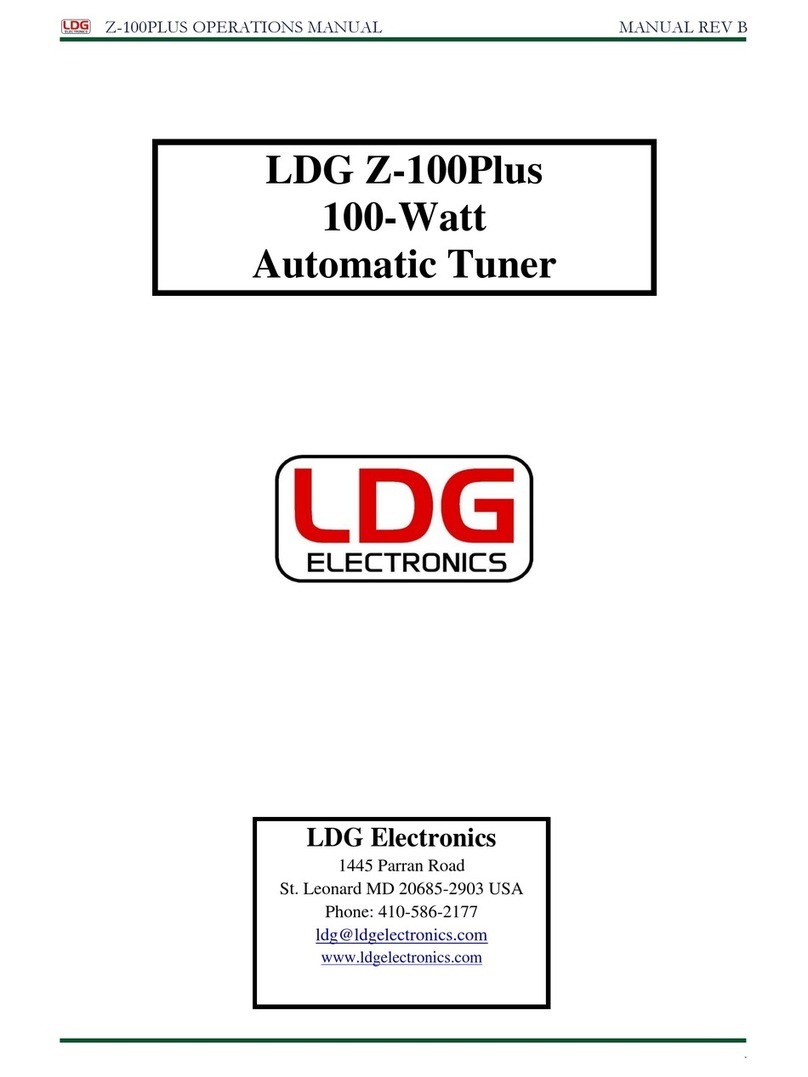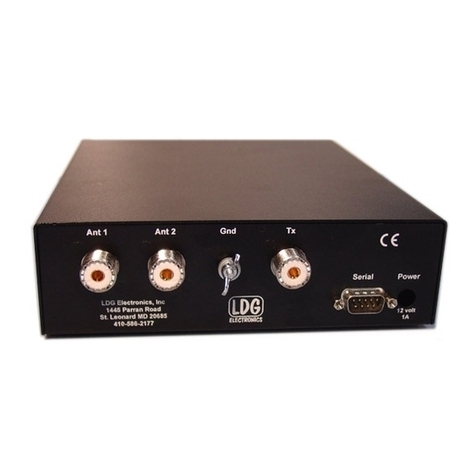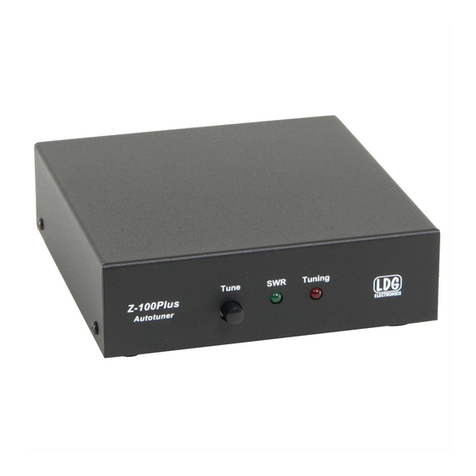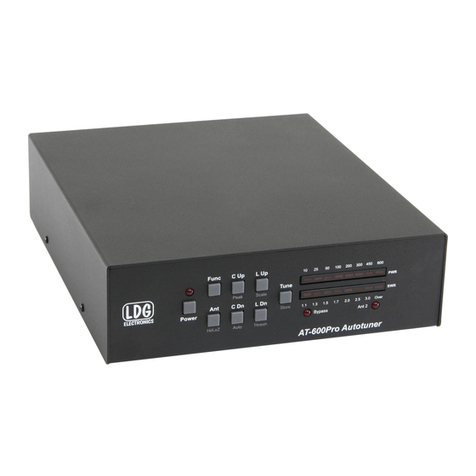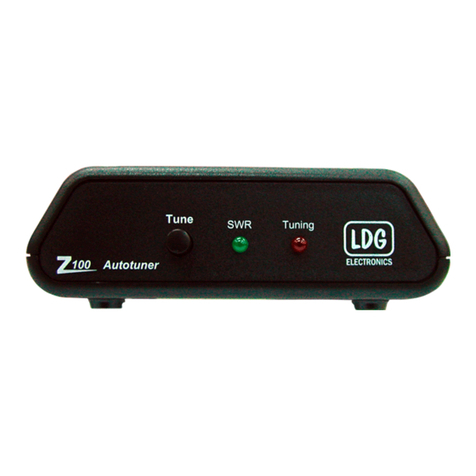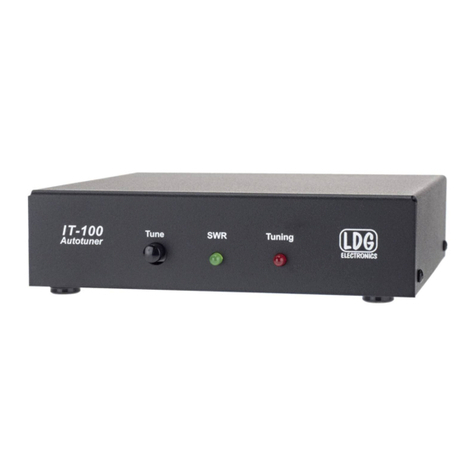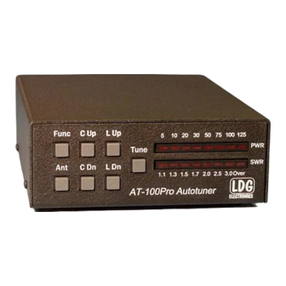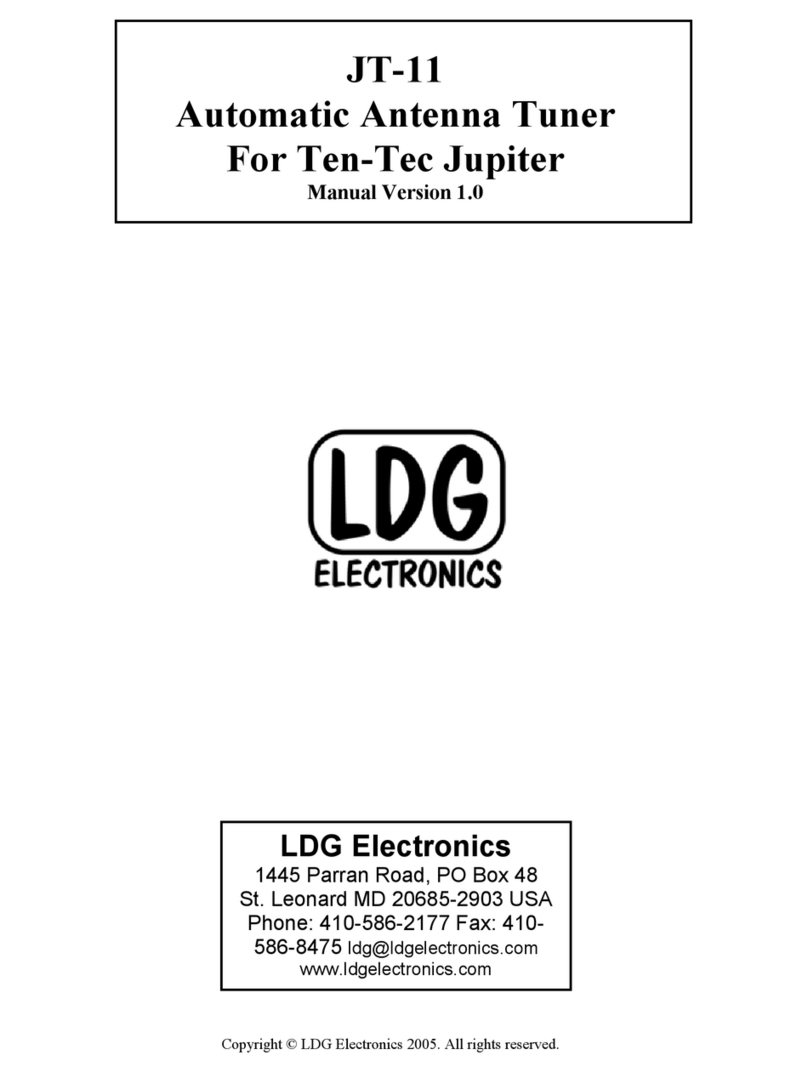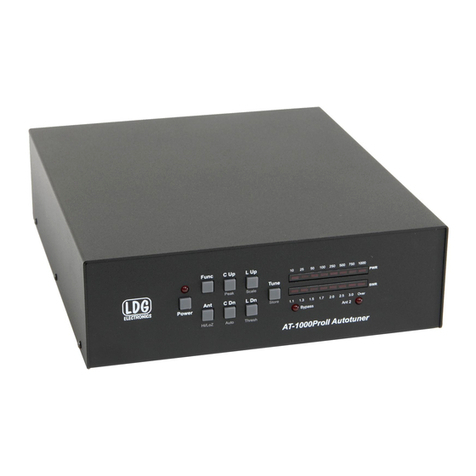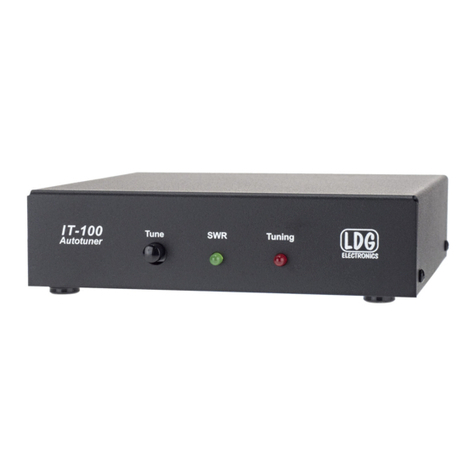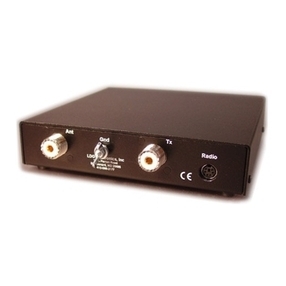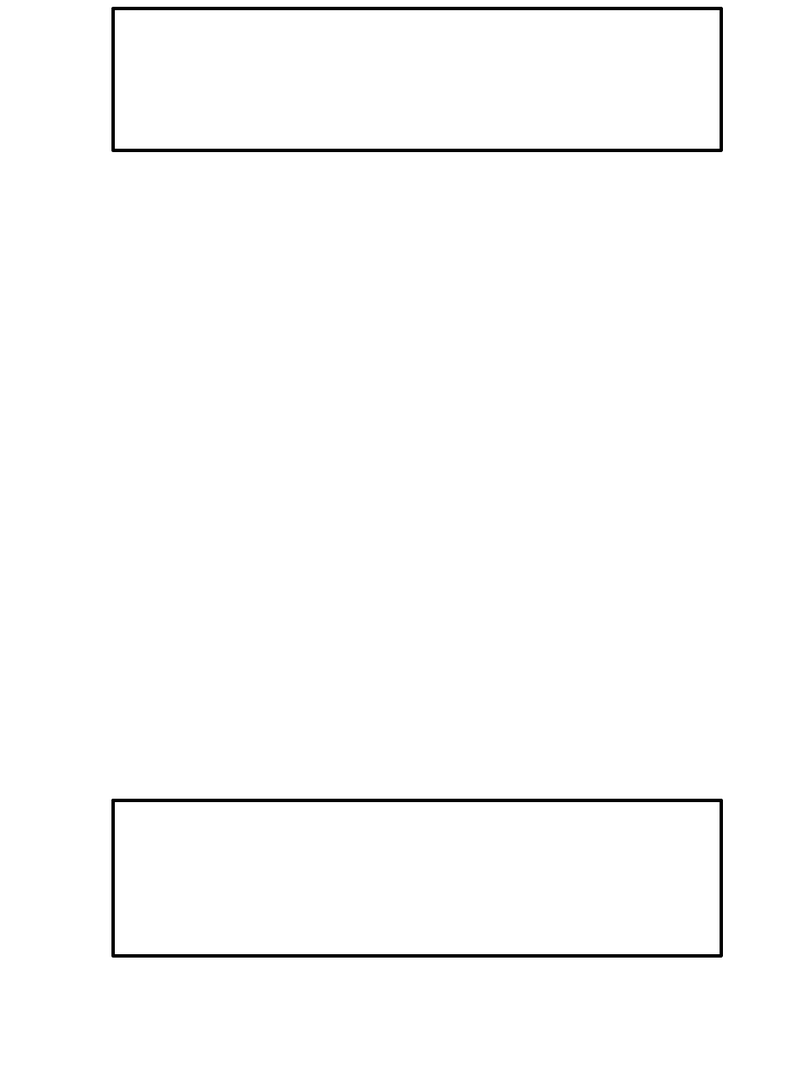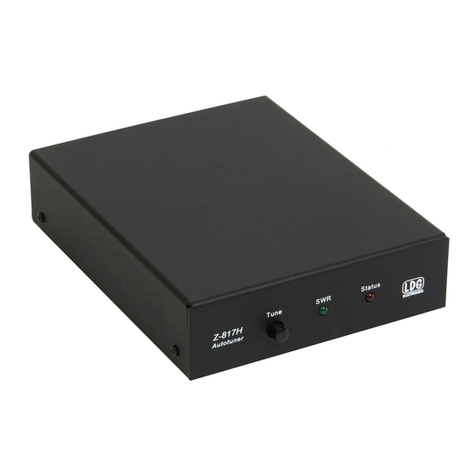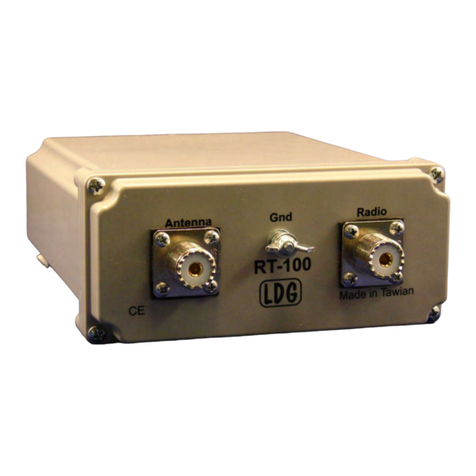
-4-
Set your transmitter or transceiver to transmit a continuous carrier of at least 0.1 watt and not more
than 30 watts output. CW or FM are usually the most convenient modes for tuning.
While transmitting the carrier, press and release the Tune pushbutton on the Z11 front panel. The
tuning cycle will start, as indicated by the red Tuning LED. You will also hear the latching relays
cycling as the processor tries different combinations of inductance and capacitance, searching for a
match; this makes a fairly loud “buzzing” noise. You can observe the SWR on the indicator LEDs; it
will decrease as the Z11 approaches a match (watch closely; it happens fast). The tuning cycle will
end automatically in a few seconds with the LEDs indicating the final match. Unkey your transmitter;
the tuning process is complete.
In the unlikely event that the Z11 fails to achieve a satisfactory match, you can manually adjust
capacitance and inductance using the front panel switches. Key your transmitter again and adjust
up or down while observing the SWR on the indicator LEDs. Unkey when you find a satisfactory
match.
In either tuning mode (Auto or Manual), if power (either RF or DC) is removed before the tuning
cycle is complete, the LEDs will all go out and tuning will stop unmatched. Correct the problem to
restore RF and DC power, and begin a new tuning cycle.
After tuning, you can leave the Power switch in the Power position (up) and the mode switch in Auto
(up). If you shift frequency significantly, causing the SWR to exceed 3.0, the Z11 will automatically
begin a new tuning cycle when you transmit a carrier. In many cases, however, you can set the
Power switch to Standby (down), eliminating current drain entirely. You can always power up and
tune in a few seconds any time you need to.
A word about tuning etiquette: Be sure to pick a vacant frequency to tune. With today’s crowded
ham bands, this is often difficult. However, do your best to avoid interfering with other hams as you
tune. The Z11’s very short tuning cycle, usually only a second or so, minimizes the impact of your
tuning transmissions.
Performance: The performance of the Z11 will surprise you. It will match an amazing range of
antenna types, locations and setups. Using an Autek RF-1 analyzer, we found that the Z11 would
consistently tune impedances from about 6 ohms to about 850 ohms. This corresponds to an SWR
of about 10:1.
Here are some informal field test results to give you a feeling for the Z11’s capabilities:
Antenna Performance
Full-sized 40 meter dipole
30 feet above ground
Tuned practically anywhere from 3.1 to 30 MHz, with some problems at
19 and 28 MHz. In these cases, the Z11 usually achieved an SWR
of 2.0 automatically; we then used the manual switches to get
below 1.5.
Antron-99 Tuned practically anywhere from 5 to 30 MHz. The auto mode
worked very well over the whole range.
3-element tri-band beam
(20, 15 and 10 meters)
70 feet above ground
Tuned all of the ham bands (including WARC) except 160 and 80.
Some problems finding a match around 27.2 MHz, but we got around
it by moving to 27.0, letting the Z11 find a match, then moving
back to 27.2.
80-meter inverted “Vee” Tuned everything from 3.1 to 30 MHz. On 160 meters it found
good matches from1.8 to 1.9 MHz.






